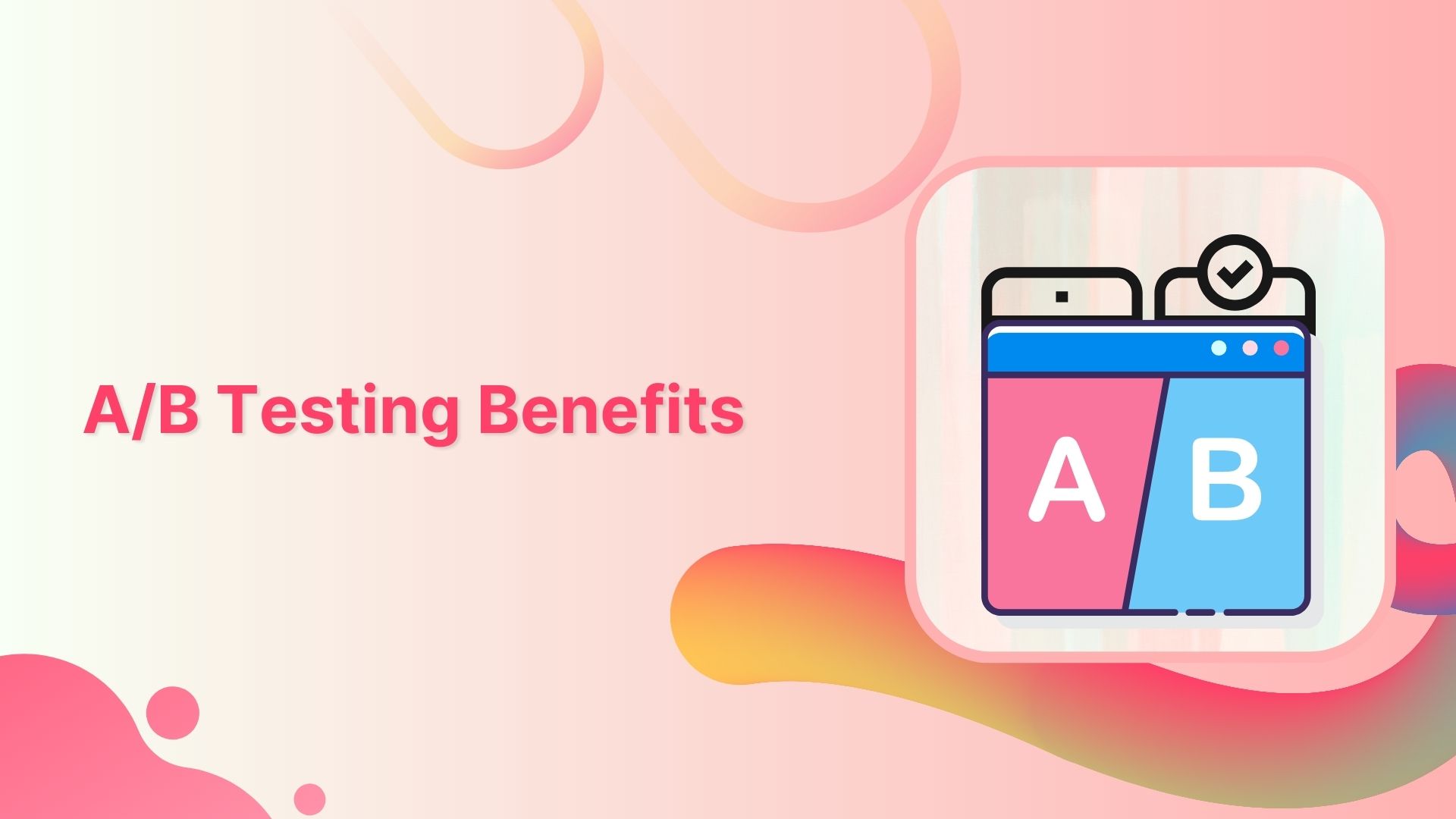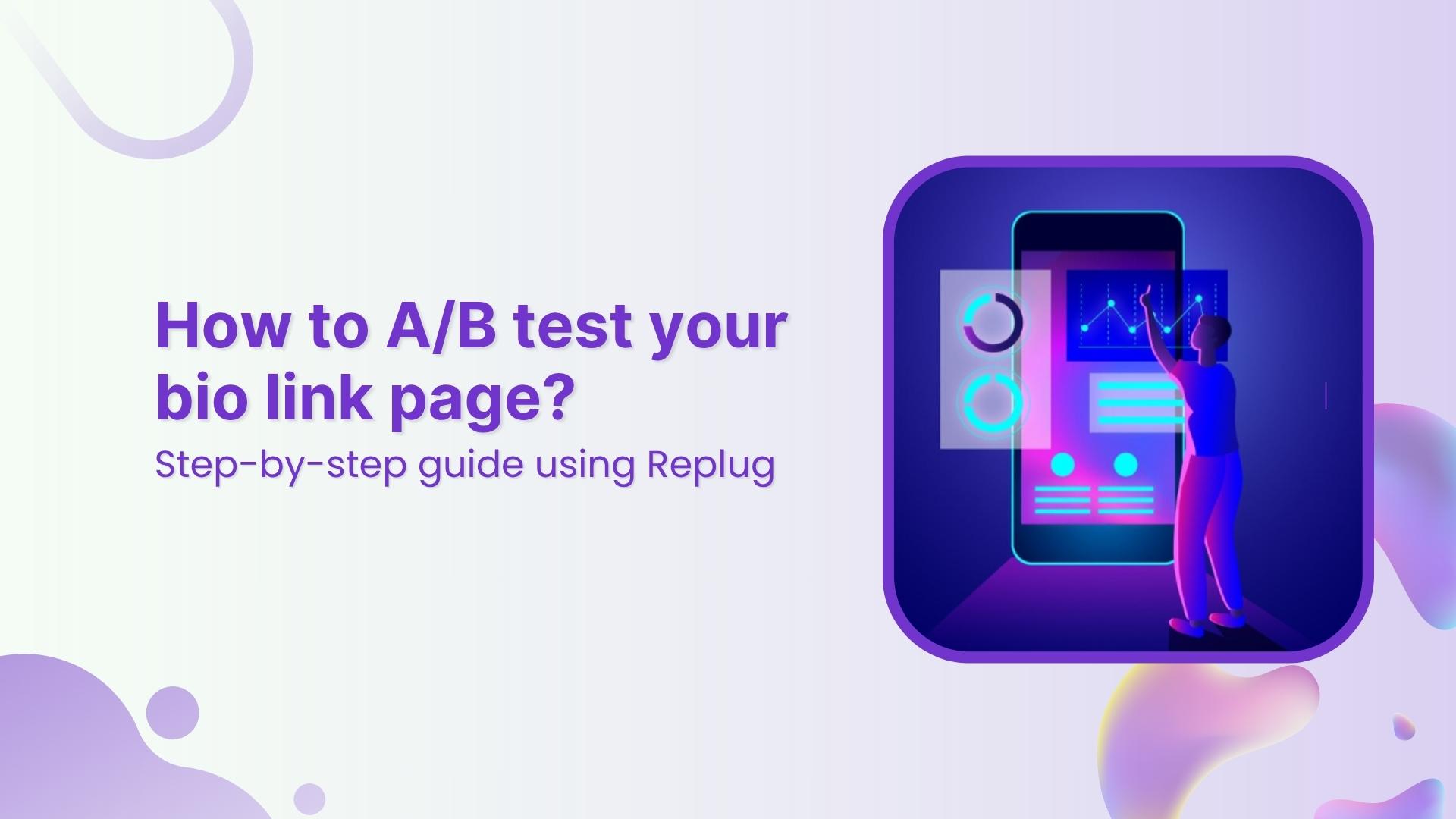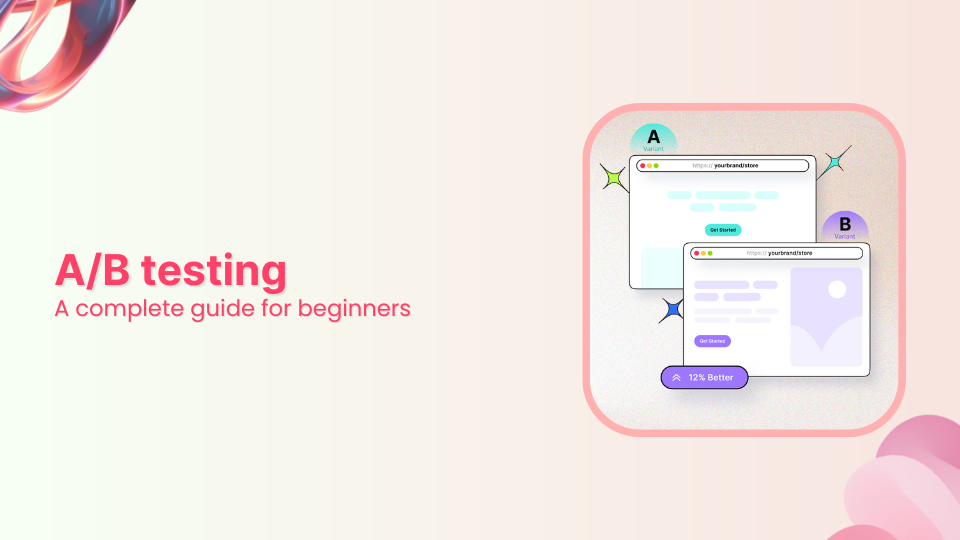What is A/B Testing?
A/B testing is a side-by-side comparison of two or more marketing campaigns, landing page designs or other elements to find out which one gets more attention in terms of clicks, conversion and overall performance.
A/B testing is a buzzword in the digital marketing industry. We have been hearing A/B testing or A/B split testing terms for website designs, logos, or banner ads for a while now.
It’s time to pay close attention to this concept and figure out what it is. More importantly, how and where else you could use A/B testing for our good.
It doesn’t matter whether you’re a beginner copywriter or a freelance graphic designer – as long as you’re working in any creative and digital marketing field, it’s going to help you out.
In this blog, you’ll also learn how you could do A/B testing via URL tracking to see which URLs perform better than the others.
11 Benefits of A/B Testing
Let’s discuss the benefits of A/B testing that every marketer and conversion optimizer should know:
1. Test URLs Performance
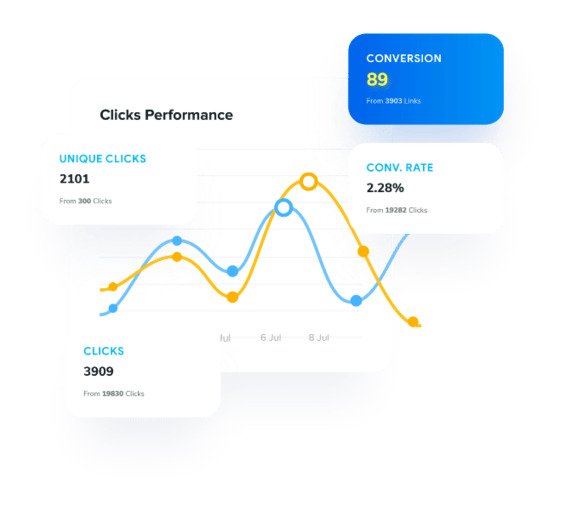
Short URLs are in the trend. No wonder every major brand uses short links for social media and content sharing across all social platforms.
The best URL shorteners like Replug allow marketers and brands to A/B test their URLs to see how people react to different versions of the same URL. Thus, it assists brands and experts in understanding URL performance.
2. Increases Conversion Rates
Conversion rate is a term used for calculating or analyzing the percentage of users who are clicking and buying/downloading the product. For instance, if 100 visitors clicked on an affiliate link and only 10 eventually bought the item, then the conversion rate would be 10%.
One of the reasons why marketers and conversion optimization experts do some sort of A/B testing is that they want to increase the conversion rate. Hence, they make an alternation on the page or copy and test it pans out. So without a doubt, A/B testing is crucial to increasing conversion rates regardless of the industry or product category.
3. Improves User Engagement
User engagement refers to the process of how a website or app keeps the user abreast. The reason why a business would want a user to stick around is that the longer the user stays, the higher the chance of a conversion.
Moreover, it plays an essential role in the success of any website or online business. E-commerce stores, digital product sellers, and affiliate marketers pay close attention to improving user engagement on website pages.
4. Makes Everything Testable
A/B testing allows marketers to test out a wide range of things just to make sure that they prioritize the best-performing unit. One of the huge benefits of A/B testing is that it quickly makes anything testable regardless of the nature of the product, type, and layout.
For instance, if you hire a graphics designer to design three Facebook ad designs and you use all three ad units in an ad set; you could easily analyze which one outperforms the other.
5. Reduce Risk by Assessing User Behavior
Understanding user behaviors saves time, effort, and energy. More importantly, it reduces the risk of putting in the work, effort, and money into something that may not yield positive ROI.
For example, digital marketers build an email list using opt-in forms. Sometimes, they change the design and layout of the opt-in form to see how users behave afterwards. If the number of sign-ups increases, it shows that it’s worth doing it.
So it’s safe to say that A/B testing helps understand user behavior. Therefore, it contributes to reducing the risk.
6. Easier to Analyze the Performance
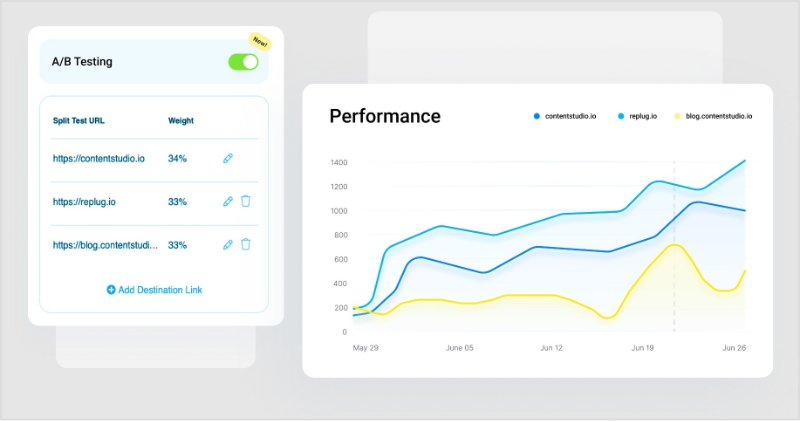
One of the biggest benefits of A/B testing is that it gets easier to analyze the performance of marketing strategies or organizational management by testing two more cases along the way.
For example, if a blogger puts two types of banner ads to test which type gets more clicks while only one of them gets clicks, then it’s obvious that something is wrong with the other banner ad.
7. Reduce Bounce Rates
A lot of digital marketers and conversion optimization experts want to reduce the bounce rates of their sales pages or overall websites, so they use A/B split testing to see what works for them.
The experts try all sorts of things, for instance, changing the sales page design, colors, fonts, etc. The purpose is to stop people from bouncing off the site sooner. They use engagement tactics such as tables, CTAs, forms, FAQs, pictures, and several other things to stop people from leaving the site.
8. Minimize Cart Abandonment
Car abandonment is a huge problem with e-commerce businesses. Brands and online stores try different tactics to deal with the cart abandonment problem.
One of the ways to deal with cart abandonment is by doing A/B testing across different areas. You could A/B test on the pricing model, call-to-action buttons, and the website theme just to see how it works for you.
Also Read: 14 Crazy-Effective Ways to Boost E-commerce Sales Through Retargeting
9. Help Solve Visitors’ Pain Point
A/B testing assists marketers and merchants in understanding the choices and preferences that users make while browsing through the website. As a result, it helps them make better decisions along the way.
Affiliate marketers and bloggers often put lead magnets on their blogs to build email lists. If their lead magnet is niche-relevant and useful for the audience, it starts to convert well. However, it doesn’t resonate with the audience, and it doesn’t work very well.
So as long as you’re understanding the visitors’ pain points, you have a better chance to get attention and convert prospects into customers.
10. Redesign Website to Increase Future Business Gains
A/B testing is incredibly important for improving the UI/UX of a website or app. User interface and user experience are terms used for noticing how users react to any design or layout or interface.
Usually, marketers test out a landing page or opt-in form designs and layouts to see which ones perform better than others.
A website design revamp is an excellent strategy to rejuvenate your digital marketing campaign. Often companies redesign their websites after four to five years just to stay relevant and up-to-date.
You can always A/B test your site conversion through a website redesign. Analyze how many conversions are happening every month and then do a site design revamp and reevaluate the performance afterwards.
11. Improve Content Engagement
A/B testing isn’t just limited to ad banners or logo designs. You could A/B test all sorts of marketing and engagement content to see what works for you.
Use this A/B testing strategy on your content. You could test out a specific type of content or certain content formatting to notice the difference.
For instance, if you’re doing more sales/commercial content on your blog, try putting out informational content to see the difference in engagement.
Also Read: Content Marketing Best Practices For 2022
Increase User Retention
User retention is how well a website or app retains users through engagement tactics – these engagement tactics could be tools, offers, quality content, etc.
One of the benefits of A/B testing is that one can increase user retention on the website. All it takes is to figure out what needs to be improved, for instance, website copy, design, layout, or call-to-actions, so that the plan of action is determined.
Real-world examples of A/B Testing
Let’s dive deep into a couple of real-world examples of A/B testing:
Example #1: Adding a call-to-action to my blog header
I have first-hand experience adding a call-to-action button on my blog that turned things around for me.
I have been telling this story for years that how a CTA button helped me grow my freelance writing business.
Here’s the short version of the story: I was struggling to earn a living with freelance writing. Little did I know that just a single CTA could change everything for me. As soon as I added that CTA to my blog’s header, I started getting email inquiries about my per-word pricing. I eventually landed some clients afterward.
Here’s what my blog’s header looked like before adding the CTA button:

This is what my blog looked like after adding a text-based CTA button on the header:

In fact, I had to remove that CTA button after a few months because the response was overwhelming – I was unable to handle the burden of work.
I vividly remember forwarding some prospective clients to other writers I knew at that time.
So it’s safe to say that A/B testing has had a huge impact on my success in the writing business.
Also read: Call To Action For Social Media : 15 Best Examples
Example #2: Changing the YouTube video titles helped get traction
The second example of A/B testing is from a blogger and YouTuber named Luke Jordan. He has been quite active on Twitter in the niche site-building and blogging community.
He shared the screenshots of video analytics that he was experimenting with. He shared the side-by-side stats before and after changing the title.
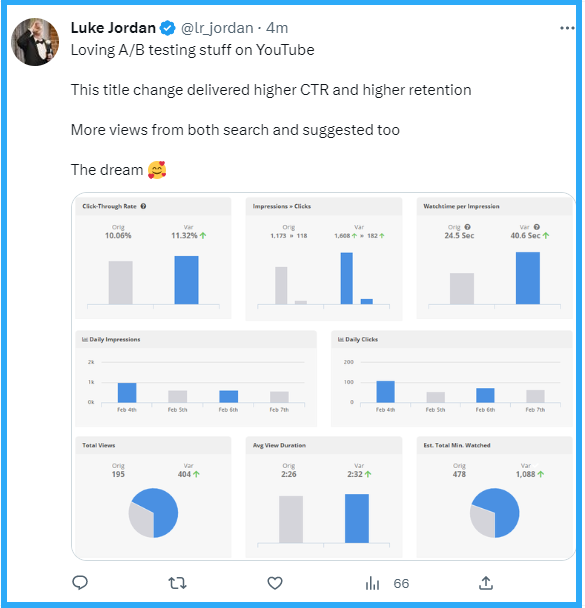
The analytics covered were click-through rate, impressions, and clicks, watch time, daily impressions, daily clicks, total views, average view duration, and est. total minutes watched.
The core point of the experiment was the effect on the performance of the video after changing the title. In the statistics shown from the TubeBuddy screen, the video skyrocketed after the video title was updated.
YouTubers and Vloggers have been changing their low-performing video titles and thumbnails for a long time, and it works in most cases. So you can do the same by A/B testing different variations of content.
Also Read: How to change YouTube URL name using a URL shortener tool?
6 Key factors to consider before conducting A/B tests
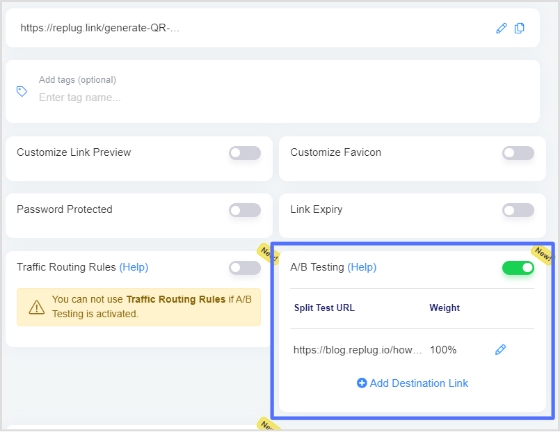
It’s vital to know how you could do A/B testing efficiently, so that the results are worth paying attention to afterwards. Here are six key elements of conducting an effective A/B testing:
1. Choose one variable to test
A/B testing is not rocket science, but you have to take care of several things to find an accurate result. One of those things is one variable to test out. You might want to be testing several things at once. Instead, focus on one thing and don’t get distracted by testing everything at once.
2. Divide your audience equally
Make sure the size of the audience is the same in either case. You don’t want to have some variations in the sample or audience size. If the audience isn’t properly divided or the sample size differs from each other, then it’d be against the essence of A/B testing.
3. Test versions simultaneously
It’s also recommended to test the versions or samples at the same time or at least give equal time, for instance, if you put a banner ad with image A for 30 days, then put the banner ad with the image B for exactly 30 days to see the accurate result.
4. Give tests time to run
It’s vital to set a proper duration for the test. Once the time is set, don’t make an alternation in the test timing. Instead, stick with the schedule. Don’t rush into concluding your A/B testing before the time.
5. Measure and analyze results
It’s essential to share the results once the testing is over. When the A/B testing completes, analyze the results without any bias or liking for a specific side. Present the results as they are.
6. Act on your results
When you put in the work in conducting the A/B testing, it’s important to put your findings into action. It doesn’t matter whether it’s the link management and you’re doing A/B testing for short links or it’s an opt-in form for email newsletter sign-up, act on your results.
Also Read: How to Do A/B Testing the Easy Way: Step-by-Step Guide
3 Major A/B testing mistakes to avoid
Sometimes, you could do everything you have planned or asked for, but there is always a possibility of something going wrong in the marketing world.
Here are some A/B testing mistakes you should be aware of and try to avoid:
1. Ending tests too soon
If you stop the test too soon or before the actual time, the results may not be accurate. Keep in mind that A/B testing isn’t any kind of prediction. It’s a side-by-side comparison of two cases. You can’t compare a 5-minute test with a 10-minute test.
2. Including too many variables to test
It’ll be difficult to analyze if you include too many variables to test. The reason is that it becomes difficult to manage several factors during an analysis. The smaller the list of key elements, the better.
3. Calling a test prematurely
One of the mistakes rookie marketers make is that they instantly decide to start an A/B test. There is always a little bit of brainstorming that goes behind such activities. So try to avoid this mistake when starting an A/B testing campaign.
FAQs about A/B Testing
Are A/B tests worth it?
A/B testing is worth trying because it’s a tried-and-tested strategy in the digital marketing field. Marketers and conversion optimization experts do all kinds of A/B testing, whether it’s the color scheme of the website, Facebook image ad, or article title. Such A/B tests help them determine the better option to work with.
Why is A/B testing important for social media?
A/B testing is important not just for social media but also for overall digital marketing. One of the reasons why A/B testing is crucial for social media is that you have to be spot-on with your marketing and engagement strategies on social media. Otherwise, you won’t get noticed in the noisy and busy world of social media.
Who needs A/B testing?
Anyone who is trying to put out content, engage the audience through digital media, marketing online through websites/blogs, and run online ads must try A/B testing. It’ll helps to analyze the audience’s behavior and figure out what audiences like the best.



























